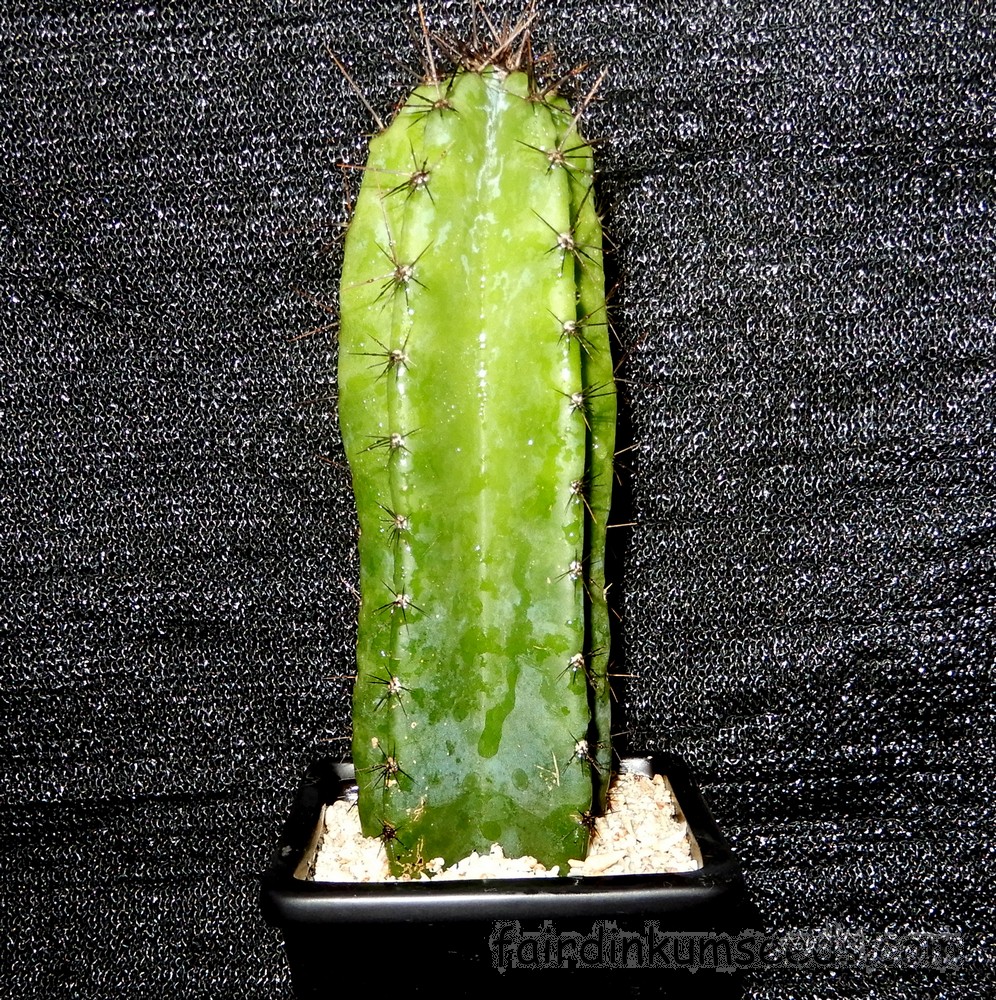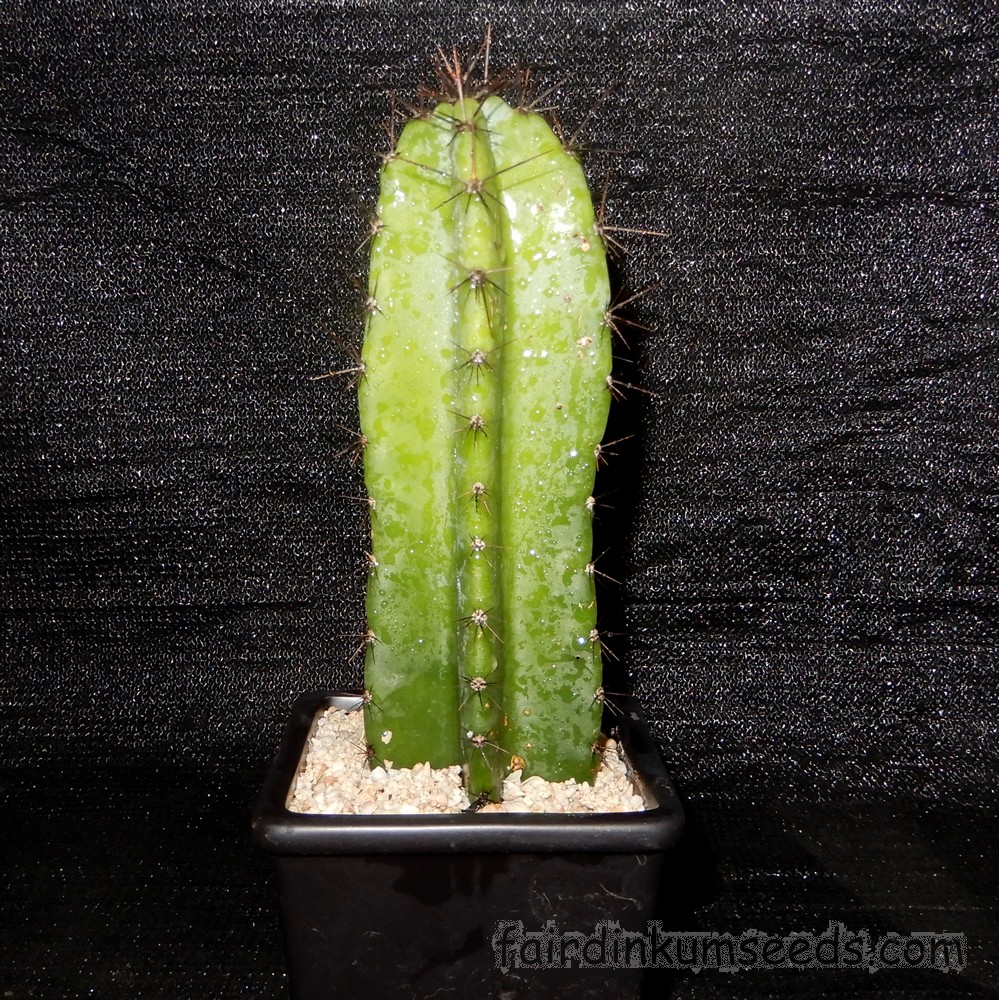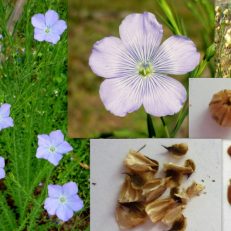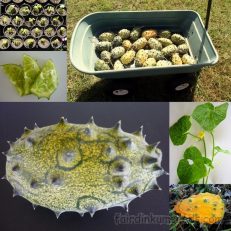Please read text!
Peruvian Apple Cactus Pitaya Cereus Repandus
1x well-rooted ~21cm Apple Cactus cutting!
It will be sent bare-rooted wrapped well in recycled materials to avoid transit damage and rot.
On arrival just remove it from the packaging and stand upright in a pot of completely bone dry sandy soil mix, being careful not to bury it too deep.
Do NOT water for a couple weeks to allow the plants to heal and form a callous, but after that you can give them a good soak once a fortnight or when the soil has dried out.
They do great in sheltered to full sunlight and assuming all goes well they should be pumping flowers and fruit in a couple years time.
This particular fast growing fruiting cactus is known by a heap of different names, most commonly Peruvian Apple Cactus, Peruvian Apple, Peruvian Tree Cactus, Apple Cactus, Hedge Cactus, Giant Club Cactus, as well as the synonums Cereus gladiger, Cereus peruvianus, Pilocereus repandus, Subpilocereus repandus, Cactus peruvianus, Piptanthocereus peruvianus, Cereus margaritensis, Subpilocereus margaritensis, Pilocereus russelianus, Cereus grenadensis, Subpilocereus grenadensis, Cereus remolinensis, Pilocereus remolinensis, Cereus atroviridis, and Subpilocereus atroviridis.
Like a lot of other Cactus Fruit the mandarin sized fruit are normally sold under the name Pitaya. This particular selection is red-skinned, white-fleshed with a subtle golden yellow tinge to them. Crisp and sweet they are super refreshing when the skin is bulging and they can be shipped to market quite easily if picked before they split. They can also be cold stored for a few weeks without any degradation of texture or flavour.
That said like pretty much every other fruit on the planet they are fantastic when allowed to fully mature and ripen on the tree.
With these guys they swell up and a crack appears during the night, by 10am they are noticeably split, open like a flower at lunch time, and at ~2pm the sugars are at their absolute highest and the white flesh has just begun to darken and caramelize in the sun.
God damn amazing, especially if you’ve been cooking in the sun since dawn yourself, digging holes, harvesting crops, or whatever. That peak picking time is pretty much the same with most of the other Cereus Apple Cactus species I grow too. Might sound a bit silly, but for a lazy bastard like me its great motivation to put a couple more hours of hard manual work, really get into it knowing I have a heap of them waiting for me all the way down the driveway.
They don’t need watering once established, they don’t have any major disease dramas, the spines keep most of the critters off them, and they produce a heap of fruit in just a few years. If you grow a few unrelated ones and cross up the flowers at night its very easy to get a buckets of fruit several times a year with absolutely no inputs or work needed.
Cereus cactus are the ultimate self-sufficiency plant and for a country with notoriously crappy soil and low rain falls its super weird they aren’t a lot more common?
They are a major crop in heaps of other places where they have the option to grow other species, where as in a lot of OZ nothing else will even survive without continual supplementation and costly inputs.
I blame weedy Opuntia tomentosum~the prickly pear.
While they are both in the Cactaceae family, its a very different subfamily Opuntioideae, whereas these guys are all Cactoideae. Completely different genus and species which makes it as silly as comparing a domestic cat to a lion. I really reckon the anti-cactus bias created by massive prickly pear infestations decades ago has cost us all as a nation.
I am hoping this changes over time and folks start to see it makes a lot more sense to grow plants that are already suited to the natural conditions. Working with nature instead of endlessly, pointlessly, battling against her.
Drought can only ever be an issue if the plant needs additional water, yes?
Lack of water is our number one biggest issue as a nation, yes?
Yet every single crop we grow is reliant on supplementary water supply pumped directly from already over-stressed and depleted catchments.
Sooooo uummmm, can someone explain to me how that is ever gonna work well?
I see no reason we can’t have a thriving cactus fruit industry providing millions of $ annually as well as food for 100’000’s of backyard growers as is commonly done elsewhere all around the world.
I’m so confident it is eventually gonna become a thing I am collecting and breeding as many fancy Cactus fruit as I can find. If that sounds like a decent idea to you too then this fella is worth a considering!
Grown by me and the Mrs organically, no chems, no nasties, no problems!




